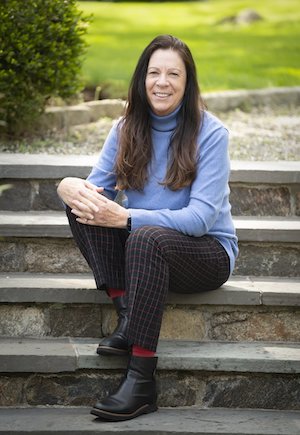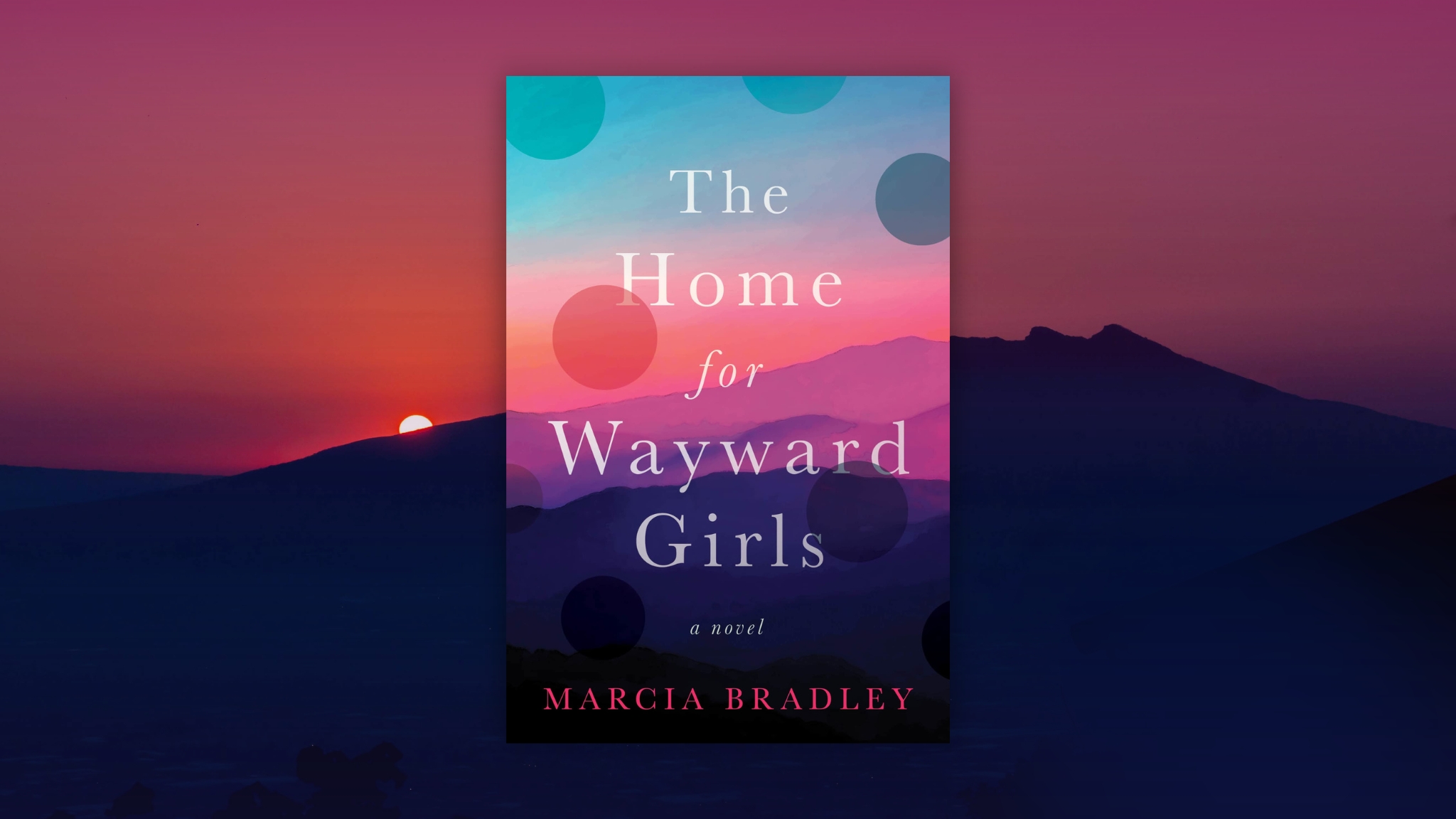The Home for Wayward Girls by Marcia Bradley
“The Ranch” is not an escape room but enter this living nightmare, if you dare, and see what is in store for the young women housed there. Privately run, under-inspected and unregulated all-girl teen correction “care” centers provide little or no care and deliver draconian discipline in the guise of correcting the behavior of their unsuspecting charges.
Marcia Bradley has written a gripping, harrowing tale of fiction with The Home for Wayward Girls (Harper Paperbacks). It held my attention from the opening paragraph, kept me up late reading and remains in my thoughts. It would make a riveting movie or television series and is certain to be a favorite among book discussion groups. The novel echoes memoirs, testimonies and social media postings by traumatized survivors of the shockingly widespread abuses they endured as victims of the lucrative “troubled teen industry” providers.
Loretta, the protagonist and first-person narrator of The Home for Wayward Girls, looks back at her horrific eighteen years on “The Ranch.” She is a survivor; a New York City transplant and successful young woman who achieved many of her early dreams including the attainment of a college education. Her attorney husband Clarke is supportive of her work and ambition to expand the nonprofit foundation called Compass.
The purpose and mission of this organization which she established is to work with defenseless and vulnerable teens, provide effective oversight of legitimate agencies and eliminate unregulated adolescent care facilities. Loretta wants each teen to receive the education and opportunities necessary to succeed in life and not be victimized as she was by her own family. She confidently navigates the city, coordinates staff and volunteers and is about to chair her first major Conference to expand the awareness and scope of Compass as well as raise significant funds.
However, it has taken years of therapy along with the love of her husband and guardian angel friends for her to speak about and cope with the traumatic memories. She still warily peers into shadows fearing William, the despotic ruler of The Ranch, is lurking, waiting to crush her spirit. Despite all her achievements, Loretta won’t truly achieve peace until this predator is locked behind prison bars for a life sentence without parole.
A Prison on the Prairie
The Home for Wayward Girls is situated on “The Ranch”; an unnamed, isolated and secluded location somewhere on the prairie where wolves howl, bears and other predators roam and vipers are not the only poisonous snakes. The one to be feared most is William, the owner, patriarch and despot who runs a program to “correct” the bad and sinful behavior of girls entrusted to him by parents who believe his disarming success stories about rehabilitating troublesome girls, ages 12 to nearly 18 years of age, and correcting their bad habits.
Some of these teens arrive unaccompanied by parents or guardians delivered forcibly by fearsome contractors she calls “rough-handlers or paid transporters”. William reassures the parents or guardians their charges will thrive under his care and to discount any tall tales of mistreatment the children may spin. He also stipulates it is essential to the program’s success that no communication is permitted for the first sixty days.
His wife, called Mama by all, is a heavy-set, broken down subservient workhorse stationed in the kitchen; overburdened, pitiless and equally as afraid of William as the inmates. She is not motherly, comforting or nurturing to any of the girls including her child by birth, Loretta. A black widow spider protects its young better than this woman.
Upon arrival, the girls quickly learn they are prisoners with no means of escape. All possessions are confiscated including the clothing they brought with them and what they were wearing. They are ordered to pull back their hair and issued the only approved attire; long denim skirts and t-shirts. They are not allowed to engage in conversation, draw or read for pleasure. Music, television, movies, and shopping excursions are not permitted in this curriculum, and adequate healthy food is not on the menu. They are there solely to work and atone for their sins. There are eggs to gather, chicken and rabbits to feed, clean up after and slaughter and the house and bunkhouse must be thoroughly scrubbed.
William lectures with his personal version of scriptures while frequently instructing them they are all sinners and whores. Friendship is discouraged and any transgressions are punished with beatings, confinement in the cleaning closet or root cellar or by the silent treatment with the girls simultaneously encouraged to taunt and hurl insults at the offender. With the tacit complicity of Mama, William abuses the girls verbally, emotionally, physically, psychologically and, most horribly, sexually. Loretta alone is spared sexual abuse solely because she is Mama’s daughter.
Loretta has lived her entire life on this barren ranch and witnessed the endless parade of shell-shocked girls who spend varying amounts of time enduring their unanticipated and unwarranted purgatory. Loretta is permitted to attend public school because her birth was registered and William doesn’t wish to draw attention from the school district authorities. She is picked up by a school bus at the end of the long driveway. Because of her singular attire and known residence at The Home for Wayward Girls, she is ignored by the other students. By riding the bus, she is exposed to music on the radio as well as ordinary conversations that provide her tantalizing glimpses of the otherworld of normal teenage life.
School represents a welcome respite from the endless work and abuse. Loretta is a good student and finds comfort from a sympathetic teacher who slips her books to read as pretend assignments. Although she doesn’t know how she will do it, Loretta plans to escape as soon as she turns 18 and is no longer a minor. Prior to that, she would be hunted down and returned to the ranch. The Home for Wayward Girls is Loretta’s inspirational and ultimately triumphant story. I highly recommend it.
A Fictional Novel With Truth at Its Core
It’s estimated in excess of 100,000 teens are currently incarcerated in what are termed “congregate-care” facilities, placed there by child welfare, juvenile justice systems and well-intentioned or desperate “at-the-end-of their rope” parents, who give credence to “tough love” pitches as being the solution for the problematic behavior of their children. While some of these teenagers are homeless, abandoned or have committed crimes, others may simply be rebellious, independent fun-loving spirits who dated the wrong individual, drank, smoked, cursed, ran away from home or were simply caught straying in some fashion from parental rules.
The facilities range from boarding schools, military-style boot-camps and wilderness camps to behavior modification programs in state or private facilities. These generate a conservatively estimated gross income of 25 billion dollars annually. Many states spend hundreds of dollars per day for each child in often abusive, poorly supervised facilities whose residents frequently exit those programs more emotionally scarred than when they entered.
Marcia Bradley has included a postscript about stalled attempts in Congress to pass and enact bills (Stop Institutional Child Abuse). The author cites the supporting testimony of Paris Hilton who was sent to four abusive facilities as a teen and now speaks out as an advocate for reform and oversight of the “troubled teen industry”. She closes the fictional The Home for Wayward Girls with a highly personal end-piece Why I Wrote This Book. For more information about Marcia Bradley’s work as a writer, editor, mentor and teacher or to read some of her published short stories, please visit her website at www.marciabradley.com.
 Marcia Bradley earned her MFA from Sarah Lawrence College after receiving her BA from Antioch University Los Angeles. She was awarded a Bronx Council on the Arts/New York City Department of Cultural Affairs BRIO Award for Fiction and has been published in Two Hawks Quarterly, Hippocampus Magazine, Drunk Monkeys, Electica, the Capital Gazette and in The Writing Disorder. A natural born wanderer, Marcia grew up in Chicago and moved to Santa Monica where she raised her daughters. She now teaches at Sarah Lawrence College and lives in the Bronx, New York.
Marcia Bradley earned her MFA from Sarah Lawrence College after receiving her BA from Antioch University Los Angeles. She was awarded a Bronx Council on the Arts/New York City Department of Cultural Affairs BRIO Award for Fiction and has been published in Two Hawks Quarterly, Hippocampus Magazine, Drunk Monkeys, Electica, the Capital Gazette and in The Writing Disorder. A natural born wanderer, Marcia grew up in Chicago and moved to Santa Monica where she raised her daughters. She now teaches at Sarah Lawrence College and lives in the Bronx, New York.




